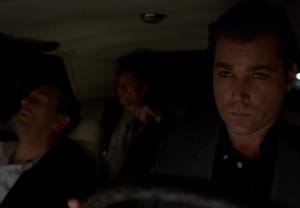
A great opening scene is vital to a successful screenplay and film, especially in the competitive world of screenwriting (and filmmaking) where industry readers judge your script in the first few pages.
The opening scene gives a first impressions of your writing ability, and serves a variety of narrative purposes that can raise the storytelling bar by instantly immersing the reader into the world of your screenplay or film. Let’s touch on a few pivotal ones.
The first type of opening scene is the Teaser.
Teaser
After Jaws used a teaser as a literally killer opening scene in 1975, making your opening scene a teaser has becoming something of a screenwriting cliché. However, it’s only a cliché if done ineffectively; executed correctly, it can be a powerful storytelling technique.
The hard truth is that most professional readers, development execs, and reps make a value judgment on your screenplay within the first 10 pages. And many viewers make a judgement in the first minutes of your film. If your story and writing hasn’t hooked them by then, it’s a knife in the gut Utilizing an opening scene as a teaser can help prevent this.
What is a teaser? It’s simply an opening moment, scene, or sequence intended to hook the audience from the get-go by generating curiosity and/or conflict that leaves the audience wanting more.
Christopher Nolan’s Memento is a terrific example of this at play. The film’s opening scene reveals a Polaroid of a dead man that slowly begins to fade away as we start to realize that the entire scene we’re watching is happening in reverse.
The audience may have no idea what’s going on, but by raising so many questions, this opening scene generates intense curiosity and demands attentive engagement throughout the film’s running time.
David Fincher’s Fight Club is another solid example of using an opening scene as a teaser. We float through the synapses of a human brain, exit out of sweating pores on a forehead, then continue to pull back down the barrel of a gun to reveal that the weapon is shoved in the mouth of Edward Norton’s character, who narrates: “People are always asking me if I know Tyler Durden.”
The non-linear scene immediately seizes our attention by drawing us in, through the vehicle of curiosity. Who’s Tyler Durden? Why does this guy have a gun shoved in his mouth? Why is Brad Pitt’s character going to blow up the city?
These questions are the spark that ignites the fire of interest in the audience who want answers, and will continue watching to get them.
Fincher’s new film, Mank, premieres on Netflix Dec. 4.
Share:

